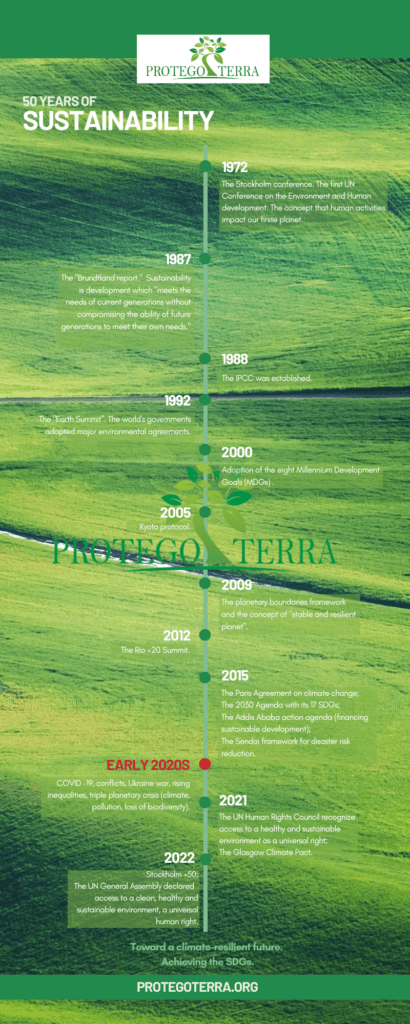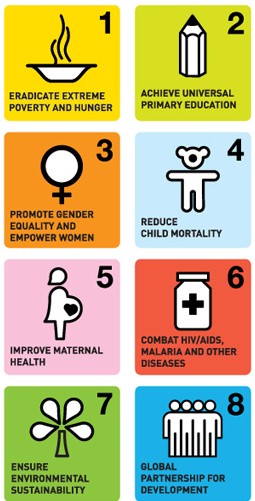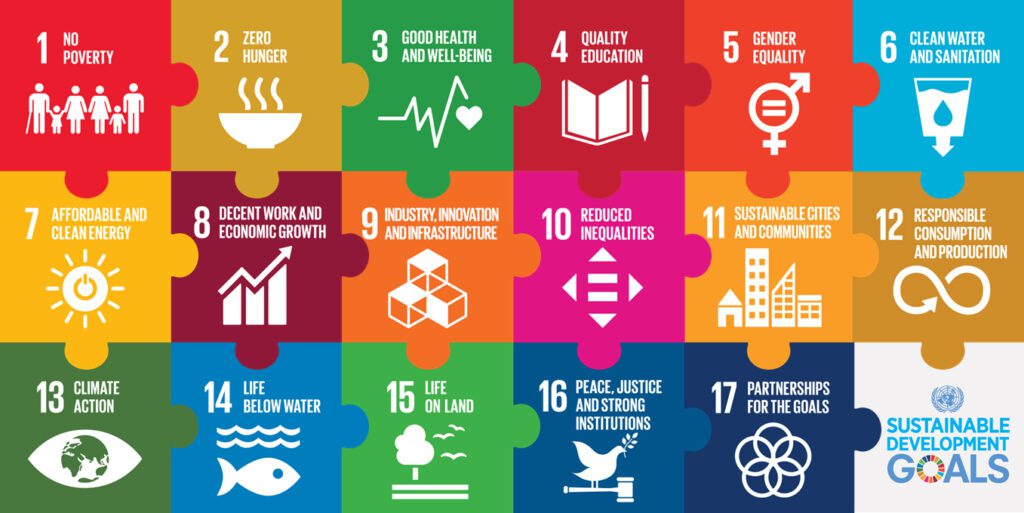A look at the past 50 years of sustainable development
In 1972, the world leaders came together in Stockholm for the United Nations (UN) Conference on the Human Environment. For the first time, a world conference was dedicated to the environment as a major issue and the concept that the Earth is finite and that we are transforming the environment in many ways at an unprecedented pace threatening “the enjoyment of basic human rights-even the right to life itself.” The Stockholm declaration proclaims that: “The protection and improvement of the human environment is a major issue which affects the well-being of peoples and economic development throughout the world; it is the urgent desire of the peoples of the whole world and the duty of all Governments.” A significant result of the conference was the creation of the United Nations Environment Programme (UNEP).

The (modern) definition of sustainability
After more than a decade of inadequate global action on several environmental challenges and recognizing the lack of global cooperation, the World Commission on Environment and Development (WCED), led by Norway’s Prime Minister Dr. Brundtland, was asked to formulate “A global agenda for change.” In 1987, the Commission released the report “Our Common Future,” also known as “the Brundtland report,” calling on the world to adopt the concept of sustainable development.
Here, we find the most prominent definition of sustainability, a development that “meets the needs of current generations without compromising the ability of future generations to meet their own needs.” The document closes with a call for action to correct the course of our development, where we (humans) are radically altering planetary processes.
We are unanimous in our conviction that the security, well-being, and very survival of the planet depend on such changes, now.
1987, Our Common Future
Given the need to assess the science related to climate change – a challenge with global consequences requiring international cooperation – 1988 marks the creation of the Intergovernmental Panel on Climate Change (IPCC).
The “Earth Summit”
Twenty years after the Stockholm conference came what is now referred to as the “Earth Summit.” It’s 1992, and we are in Rio de Janeiro, Brazil. It was the UN Conference on Environment and Development (UNCED), where the world’s governments recognized that “integrating and balancing economic, social and environmental concerns in meeting our needs is vital for sustaining human life on the planet and that such an integrated approach is possible.”
Among the many achievements of the “Earth Summit”:
- The Rio Declaration and its 27 universal principles;
- The United Nations Framework Convention on Climate Change (UNFCCC), to fight human-induced climate change;
- The UN Convention on Biological Diversity to prevent the destruction of the ecosystem and species extinction;
- The UN Declaration on the principles of forest management.
The Millennium Development Goals
It’s the year 2000, and we see the Millennium Declaration, where 189 UN member states committed to combating disease, hunger, poverty, illiteracy, discrimination against women, and environmental degradation. They agreed to adopt eight Millennium Development Goals (MDGs) to be achieved by 2015.

The MDGs led to substantial progress over the years, but the goals were not achieved by 2015.
The Sustainable Development Goals
Twenty years have passed since the “Earth Summit” in Rio, and the world’s governments met at the UN Conference on Sustainable Development – also known as Rio+20 – to review what had happened in those 20 years (1992 to 2012). Building on the Millennium Development Goals (MDGs), the world’s leaders decided to launch a process to develop a set of Sustainable Development Goals (SDGs). After two years of negotiated process, in September 2015, the 2030 Agenda for Sustainable development with its 17 SDGs and 169 targets was adopted.

Among the 17 SDGs, Global Goal 13 is dedicated to Climate Action, which calls for “urgent action to combat climate change and its impacts.” However, we should recognize that climate change is a cross-cutting issue affecting all five dimensions of sustainable development (people, planet, prosperity, peace, and partnership – the 5Ps). If we do not address climate change now (in this decade), we risk reversing the progress made over the last decades, and achieving the Global Goals by 2030 will not be possible.
The Paris Agreement
2015 was also the year of the Paris Agreement on Climate Change. The Paris Agreement aims to strengthen global climate action to keep the global temperature rise this century well below 2 degrees Celsius (2°C) above pre-industrial levels and to pursue efforts to limit it to 1.5°C.
Addressing climate change means taking climate action in two core areas:
- climate mitigation: reducing greenhouse gas emissions, e.g., by switching to renewable sources of energy or by protecting forests and ocean ecosystems;
- climate adaptation: protecting people, settlements, and livelihoods from the adverse effects of climate change.
It also means unlocking the investments needed for a sustainable green transition that leaves no one behind.
In the Paris Agreement, we read:
Article 2
- This Agreement, in enhancing the implementation of the Convention, including its objective, aims to strengthen the global response to the threat of climate change, in the context of sustainable development and efforts to eradicate poverty, including by:
(a) Holding the increase in the global average temperature to well below 2°C above pre-industrial levels and pursuing efforts to limit the temperature increase to 1.5°C above pre-industrial levels, recognizing that this would significantly reduce the risks and impacts of climate change;
(b) Increasing the ability to adapt to the adverse impacts of climate change and foster climate resilience and low greenhouse gas emissions development, in a manner that does not threaten food production; and
(c) Making finance flows consistent with a pathway towards low greenhouse gas emissions and climate-resilient development. - This Agreement will be implemented to reflect equity and the principle of common but differentiated responsibilities and respective capabilities, in the light of different national circumstances.
Harnessing climate and SDGs synergies
Climate change poses significant threats to sustainable development: increased frequency and severity of extreme weather events (floods, heatwaves, droughts) directly threaten the progress already achieved and to be delivered by 2030.
More frequent and intense weather events amplify existing challenges: disaster risks and damage to infrastructures, impacts on health and livelihoods, access to food and water, conflicts, and migration. The worst impacted are the most vulnerable, especially developing countries & frontline communities with limited capabilities to adapt and respond to these events. Therefore, when taking climate action (mitigation & adaptation measures, capital), it is essential to take into account the needs of the poor and most vulnerable groups to ensure a just transition.
Deforestation and poor land use management destroy carbon sinks, which absorb carbon dioxide from the atmosphere. Forests, soil, and the ocean are examples of natural carbon sinks. Conversely, protecting and restoring forests and sustainably using our lands allow communities to build & protect their (sustainable) livelihoods.
In addition, failing to invest in sustainable energy and manufacturing processes will lock countries into unsustainable development pathways characterized by high greenhouse gas emissions and addiction to fossil fuels.
On the bright side, tackling climate change brings enormous opportunities. For instance, investments in renewable energy lead to improved energy access, health benefits through reduced emissions, and increased employment opportunities.
Harnessing the synergies and minimizing the trade-offs in Nationally Determined Contributions (NDCs – these are counties plans to be submitted according to the Paris Agreement) and Voluntary National Reviews (VNRs – where countries assess and present their progress in implementing the 2030 Agenda) is vital to tackle climate change, overcome poverty and build a better – more sustainable- future.
Climate change and the SDGs must be aligned to ensure a just transition that leaves no one behind.
Since 1972, we have seen a growing effort to understand better the environmental threats in the context of human development. It is clear that a significant gap remains between promises and action. The good news is that we have all we need to make a difference and create a greener & sustainable future for all.
On the 28th of July (2022), the UN General Assembly declared access to a clean, healthy, and sustainable environment a universal human right. It’s a historic resolution, without a doubt, but it’s not enough. Countries must implement bolder plans to tackle the triple planetary crisis facing humanity. The future is in our hands.
Yesterday (28/7), the UN General Assembly declared access to a clean, healthy, and sustainable environment a universal #HumanRight.
— Sara Giovarruscio (@protegoterra) July 29, 2022
“The newly recognised right will be crucial to tackling the triple planetary crisis.” 1/2#ClimateCrisis #pollution #biodiversity loss
